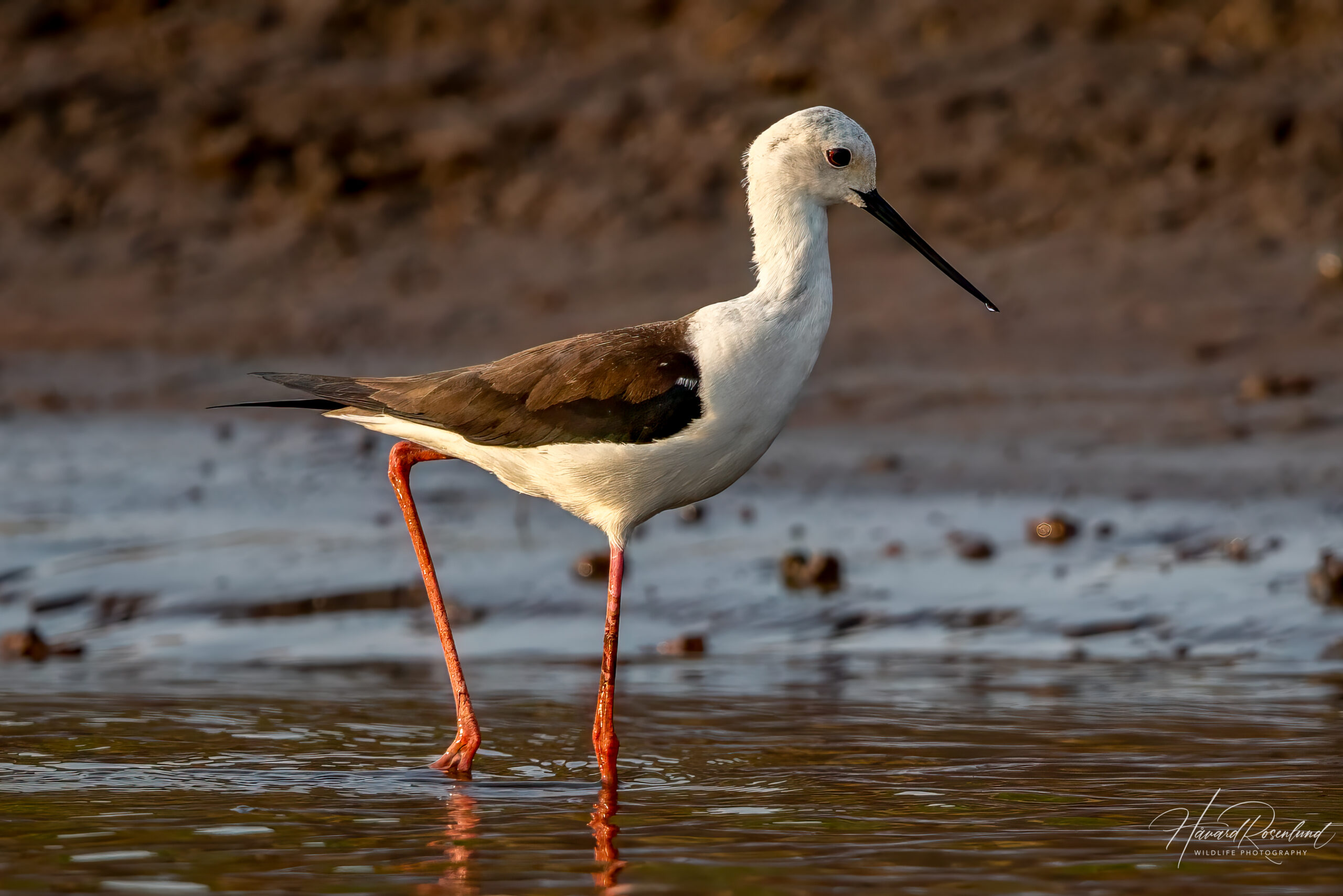Description
The black-winged stilt (Himantopus himantopus) is a widely distributed and distinctive wading bird. It has a range that spans across Europe, Asia, and Africa. It’s notable for its exceptionally long red legs, which are the longest in proportion to its body of any bird (they can be over 60% of its total height), and its striking black-and-white plumage. Adult stilts typically measure about 33 to 36 cm (13-14 in) in length with a wingspan of 70 to 80 cm (27.5-31.5 in). They differ from similar species, like the pied stilt (Himantopus leucocephalus) in Australia, mainly in plumage patterns and slight size variations.
Diet & habitat
Black-winged stilts inhabit shallow wetlands, including marshes, rice fields, and lakeshores. Their diet mainly consists of aquatic insects, crustaceans, and other small invertebrates, which they obtain by delicately picking from the water’s surface or mud. They feed in shallow water, often immersing their heads, and use a technique called “pecking” where they rapidly pick food from the surface.
Migration
These birds are partially migratory. Populations in the temperate regions migrate southwards in winter, while tropical populations tend to be more sedentary. There’s evidence of range expansion, possibly due to climate changes, with these birds colonizing new areas and extending their traditional ranges. It has been particularly more common in Great Britain in recent years.
Nesting
Breeding season varies geographically, but it generally occurs in spring and early summer. The black-winged stilt nests in small colonies on the ground near water. The nest is a simple scrape, often lined with small objects. Their nests sometimes float on water and can be anchored to vegetation. To distract predators away from their nests, they often perform a “broken-wing” act. Both parents incubate the eggs, typically 3-4 in number, for about 25 days. Chicks are precocial, leaving the nest within hours after hatching, and they fledge in about 4 weeks.
Status
The black-winged stilt has an extensive range across three continents, and is extending its range even further because of climate change. It is listed as least concern on the IUCN Red List.








